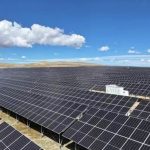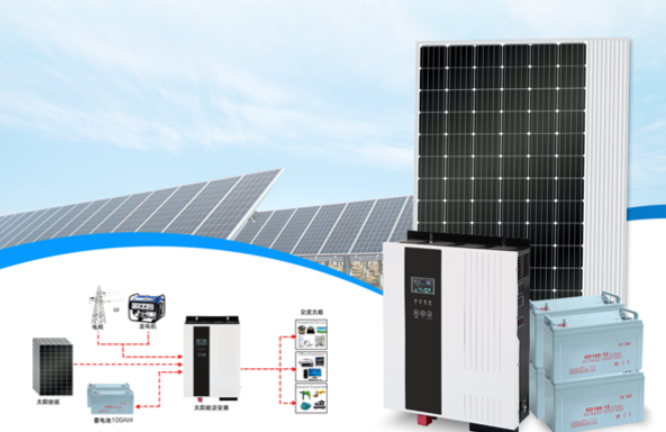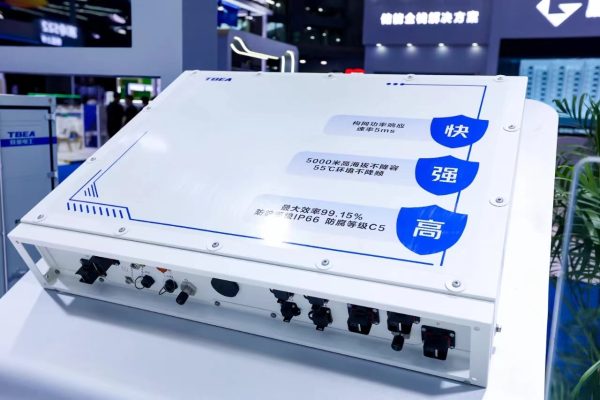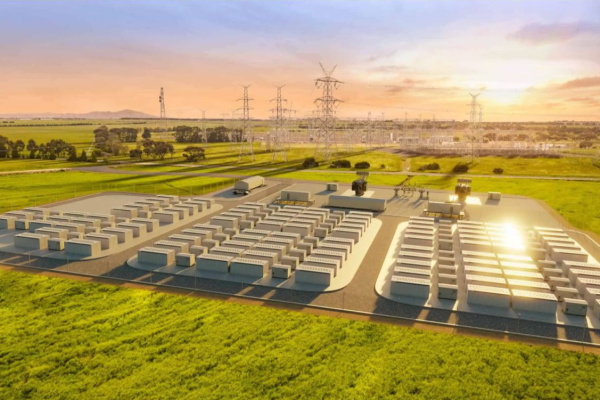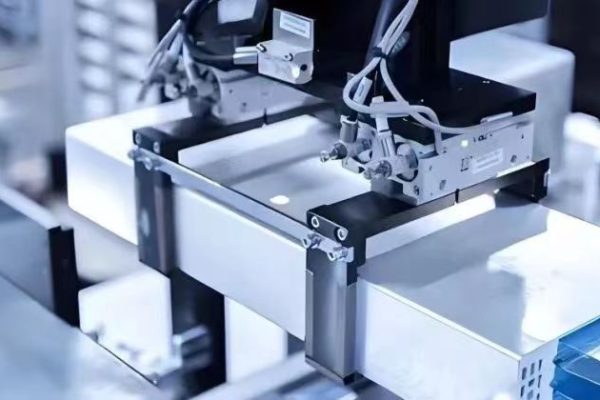Selecting the right hybrid inverter is one of the most important design decisions in any PV + energy storage system (ESS) project.
For buyers and engineers, understanding the difference between single-phase and three-phase hybrid inverters helps ensure proper system compatibility, grid compliance, and long-term stability.
In this article, we’ll compare the two configurations in depth — their structure, pros and cons, and how to choose the right type based on project size, load type, and region.
1. What Is a Hybrid Inverter?
A hybrid inverter combines the functions of:
- PV inverter (DC → AC conversion)
- Battery inverter / charger (bidirectional DC ↔ AC)
- Energy management controller (for PV, battery, and grid coordination)
It allows the system to:
✅ Convert solar power for local use or grid export
✅ Charge batteries when solar or grid power is available
✅ Discharge stored energy during evening or outages
💡 In hybrid systems, the inverter acts as the “brain,” managing both renewable generation and storage behavior.
2. Understanding Electrical Phases
Before comparing, let’s recap what “phase” means:
- Single-phase systems have one alternating current (AC) waveform, typically 220–240V.
- Three-phase systems have three AC waveforms, each 120° apart, providing more stable and continuous power at 380–415V.
Example:
A small house may only need single-phase 230V supply,
while a factory or office typically uses 400V three-phase to power motors and machinery.
3. Single-Phase Hybrid Inverters
Typical Use:
Residential, small shops, and light commercial loads under 10 kW.
Features:
- Rated power: 3–10 kW
- Input voltage: 220–240V
- Compact and lightweight
- Easier installation (fewer wires and breakers)
- Compatible with single-phase meters
Advantages:
✅ Lower cost and simpler wiring
✅ Ideal for single-phase household loads
✅ Quick commissioning with minimal configuration
Limitations:
❌ Cannot balance multi-phase industrial loads
❌ Limited scalability for large PV+ESS systems
❌ Not suitable for 3-phase machinery (e.g., compressors, pumps)
🏠 Best for small homes, offices, or off-grid cabins with basic appliances.
4. Three-Phase Hybrid Inverters
Typical Use:
Commercial buildings, factories, or large residential systems above 10 kW.
Features:
- Rated power: 10–100 kW+
- Input voltage: 380–415V
- Balanced output across three phases
- Higher efficiency under heavy load
- Compatible with grid-tied industrial systems
Advantages:
✅ Handles larger, unbalanced loads
✅ Reduces neutral current and voltage drop
✅ Enables phase-level control for power quality
✅ Easier integration with commercial EMS systems
Limitations:
❌ Higher equipment cost
❌ Requires more complex wiring and protection
❌ Slightly longer commissioning time
🏭 Best for industrial users, offices, schools, and mini-grids with mixed loads.
5. Technical Comparison Table
| Parameter | Single-Phase Hybrid | Three-Phase Hybrid |
|---|---|---|
| Rated Power Range | 3–10 kW | 10–100 kW+ |
| Output Voltage | 220–240V | 380–415V |
| Efficiency | 95–97% | 96–98% |
| Load Balance | N/A | Balanced across 3 phases |
| Typical Application | Residential | Commercial / Industrial |
| Grid Compatibility | Single-phase grid | 3-phase grid |
| Cost | Lower | Higher |
| Expandability | Limited | High scalability |
6. Battery and Phase Compatibility
One frequent buyer question:
“Can I connect a single-phase inverter to a three-phase battery bank?”
🔧 The answer is no — batteries are DC components, and the inverter defines AC output phase configuration.
However, you can:
- Install three single-phase hybrid inverters (one per phase) to form a 3-phase system, if supported by the manufacturer’s synchronization protocol.
- Or use one three-phase hybrid inverter with a shared DC bus.
⚠️ Always check whether your inverter supports multi-inverter synchronization before ordering.
7. Communication and Control
Both inverter types support EMS / BMS integration, but there are differences:
- Single-phase: simpler setup via RS485 or Wi-Fi; used mainly for household monitoring.
- Three-phase: advanced EMS functions, including demand control, load shifting, and reactive power support.
In large projects, the EMS can control multiple 3-phase inverters to perform:
- Peak shaving
- Grid export limitation
- Dynamic reactive compensation (Q control)
📡 Commercial-grade systems rely on open protocols like Modbus TCP or CAN for interoperability.
8. Installation Considerations
For Single-Phase Systems:
- Simpler wiring: L–N–PE
- Use single-phase AC breakers (1P+N)
- Shorter commissioning time
For Three-Phase Systems:
- Wiring: L1–L2–L3–N–PE
- Requires 3P+N+PE breakers and surge protection
- Must balance PV strings and battery power across phases
- Commission using grid analyzer for voltage phase sequence
🧰 Label all cables clearly — miswired phases can trigger inverter protection faults.
9. Typical Use Cases
| Scenario | Recommended Type | Example |
|---|---|---|
| Small house (5 kW PV + 10 kWh battery) | Single-phase | Residential hybrid system |
| Apartment complex rooftop (30 kW PV) | Three-phase | Shared commercial supply |
| Factory with machines and compressors | Three-phase | Industrial ESS |
| Off-grid cabin or telecom tower | Single-phase | Standalone hybrid inverter |
| School / community microgrid | Three-phase | Centralized PV + battery hub |
10. Cost and ROI Perspective
| Category | Single-Phase | Three-Phase |
|---|---|---|
| Unit Cost | Lower | ~25–40% higher |
| Installation Labor | Simple | More complex |
| Efficiency | Slightly lower | Higher under load |
| Maintenance | Easier | Needs skilled technician |
| ROI Payback (Typical) | 4–5 years | 5–6 years |
📈 Although three-phase systems cost more initially, they offer better long-term stability and load compatibility — ideal for business operations.
11. Case Study
Project: 30 kW PV + 60 kWh Battery System for a Small Manufacturing Facility
Solution: 1 × 30 kW three-phase hybrid inverter + 3 × 20 kWh LFP battery racks
Results:
- Reduced demand charge by 27%
- Achieved 97.8% conversion efficiency
- Seamless transition during grid outages (UPS-like function)
- Remote monitoring via Modbus TCP
🏆 Demonstrates how three-phase hybrids can serve both production and office loads under one controller.
12. Future Trends
- Modular phase control — hybrid inverters that can operate in both single and three-phase modes
- Higher DC voltage support (up to 1500V) for utility-scale hybrid systems
- Smart load management — phase-wise load optimization via AI-driven EMS
- All-in-one hybrid cabinets combining PV, inverter, and ESS into a single modular structure
⚙️ Next-generation hybrid inverters will unify residential and C&I features into scalable platforms.
Both single-phase and three-phase hybrid inverters play vital roles in today’s solar + storage market.
In summary:
- Choose single-phase for small residential or standalone systems (≤10 kW).
- Choose three-phase for commercial, industrial, or multi-unit projects (>10 kW).
By matching inverter phase type with your load profile, grid structure, and expansion plans, you ensure:
✅ Stable performance
✅ Grid compliance
✅ Maximum ROI
⚡ Inverter phase selection isn’t just electrical — it’s strategic.



